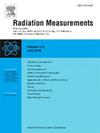Deuterium-deuterium fusion charged particle detection using CR-39 and deep learning model
IF 2.2
3区 物理与天体物理
Q2 NUCLEAR SCIENCE & TECHNOLOGY
引用次数: 0
Abstract
Columbia Resin #39 (CR-39) solid-state nuclear track detectors are widely used in fusion research for detecting charged particles produced in fusion reactions. However, analyzing increasingly complex and large-scale CR-39 track images to extract meaningful information is a tedious and time-consuming process, often prone to human error and bias. To address these challenges, we developed an AI-based classification model capable of differentiating protons, tritons, and helions produced during D-D fusion, using CR-39 track images as input data. The CR-39 track images were processed and used to train a deep learning model. By preprocessing the track images for noise reduction and feature enhancement, we trained the You Only Look Once version 8 (YOLOv8) network to distinguish the three particle types with high accuracy. We designed a method that cuts large images into smaller pieces and then enlarges them again to achieve a lower density in each segmented piece to improve accuracy. The sliced images are then reconstructed using overlapping cuts and Non-Maximum Suppression (NMS) to handle the overlapping parts of the stitches. By adopting NMS, we retain only the bounding box with the highest confidence level, avoiding duplicate detections and achieving accurate counting. The proposed model achieved a classification accuracy of over 94 %, demonstrating its potential for improving automated track analysis in CR-39 detectors. Additionally, the model precisely identifies particle coordinates and counts, enabling comprehensive particle analysis. This study highlights the application of AI in track detection and classification, offering a robust solution for particle identification in CR-39 detector-based experiments.
基于CR-39和深度学习模型的氘-氘聚变带电粒子检测
哥伦比亚树脂#39 (CR-39)固态核径迹探测器广泛用于核聚变研究,用于探测核聚变反应中产生的带电粒子。然而,分析日益复杂和大规模的CR-39轨道图像以提取有意义的信息是一个繁琐而耗时的过程,往往容易出现人为错误和偏见。为了应对这些挑战,我们开发了一种基于人工智能的分类模型,能够区分D-D聚变过程中产生的质子、氚和氦,使用CR-39轨道图像作为输入数据。对CR-39轨道图像进行处理并用于训练深度学习模型。通过对轨道图像进行降噪和特征增强预处理,我们训练了You Only Look Once version 8 (YOLOv8)网络,以高精度区分三种颗粒类型。我们设计了一种方法,将大图像切割成更小的块,然后再次放大,从而在每个分割块中实现更低的密度,以提高精度。然后使用重叠切割和非最大抑制(NMS)来处理缝线的重叠部分来重建切片图像。通过采用NMS,我们只保留置信度最高的边界框,避免重复检测,实现准确计数。该模型实现了94%以上的分类精度,显示了其在CR-39探测器自动轨迹分析方面的潜力。此外,该模型可以精确识别粒子坐标和计数,从而实现全面的粒子分析。本研究突出了人工智能在轨道检测和分类中的应用,为CR-39探测器实验中的粒子识别提供了一个鲁棒的解决方案。
本文章由计算机程序翻译,如有差异,请以英文原文为准。
求助全文
约1分钟内获得全文
求助全文
来源期刊

Radiation Measurements
工程技术-核科学技术
CiteScore
4.10
自引率
20.00%
发文量
116
审稿时长
48 days
期刊介绍:
The journal seeks to publish papers that present advances in the following areas: spontaneous and stimulated luminescence (including scintillating materials, thermoluminescence, and optically stimulated luminescence); electron spin resonance of natural and synthetic materials; the physics, design and performance of radiation measurements (including computational modelling such as electronic transport simulations); the novel basic aspects of radiation measurement in medical physics. Studies of energy-transfer phenomena, track physics and microdosimetry are also of interest to the journal.
Applications relevant to the journal, particularly where they present novel detection techniques, novel analytical approaches or novel materials, include: personal dosimetry (including dosimetric quantities, active/electronic and passive monitoring techniques for photon, neutron and charged-particle exposures); environmental dosimetry (including methodological advances and predictive models related to radon, but generally excluding local survey results of radon where the main aim is to establish the radiation risk to populations); cosmic and high-energy radiation measurements (including dosimetry, space radiation effects, and single event upsets); dosimetry-based archaeological and Quaternary dating; dosimetry-based approaches to thermochronometry; accident and retrospective dosimetry (including activation detectors), and dosimetry and measurements related to medical applications.
 求助内容:
求助内容: 应助结果提醒方式:
应助结果提醒方式:


